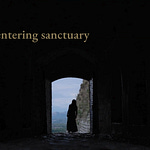Here we go - aiming to create a zen emotional world before the madness of December descends!
I intend that you enjoy this series! You will recieve your information on a Friday which gives you the weekend to watch, listen and plan then the week to implement.
For all paid subscribers you will receive a workbook that accompanies the series.
As ever, I am here to answer any questions, queries or comments!
Session One - Introduction to your emotional world
Understand from a broad perspective where your emotional reactions have come from. There will be a tour of the central nervous system and you will find out where they learned all about emotions and what the purpose of emotions are.
Dr. Rachel and Emma's Emotional Exploration
Dr. Rachel, had always been fascinated by the complexities of the human brain. Her work was driven by a passion for understanding how environments shape emotions that then shape our experiences and behaviour. But as she delved deeper into her research, Rachel found herself struggling to navigate her own emotional world.
One evening, after a particularly challenging day at the lab, Rachel received a call from Emma, a dear friend who had been going through a tough time. Emma, a teacher with a big heart, was overwhelmed by the emotional toll of her work and personal life. She reached out to Rachel, hoping to gain some insights into understanding and managing her emotions.
Together, Rachel and Emma embarked on a journey to explore their emotional worlds. Rachel, with her extensive knowledge of neuroscience, became both a guide and a fellow traveler in this journey.
A Journey Through the Central Nervous System
1. The Brainstem: The Gatekeeper Rachel explained that the brainstem, often called the "reptilian brain," is the oldest part of the brain. It regulates basic life functions such as heart rate, breathing, and sleep. When Emma felt a sudden surge of anxiety, it was the brainstem triggering her fight-or-flight response, preparing her body for action. This primitive reaction was her body’s way of ensuring survival.
2. The Limbic System: The Emotional Core Rachel guided Emma through the limbic system, the emotional core of the brain, which includes the amygdala, hippocampus, and hypothalamus.
Amygdala: Rachel described the amygdala as the brain's alarm system, detecting potential threats and triggering emotional responses such as fear and anger. When Emma encountered stressful situations, her amygdala activated, preparing her to react swiftly.
Hippocampus: The hippocampus, Rachel explained, is responsible for forming and storing memories. It helped Emma remember past experiences and learn from them. Her emotional reactions were often influenced by memories stored in the hippocampus.
Hypothalamus: The hypothalamus regulates Emma’s body's internal balance, including hunger, thirst, and temperature. It also played a role in emotional responses by controlling the release of hormones.
3. The Prefrontal Cortex: The Rational Thinker Rachel shared that the prefrontal cortex, located at the front of the brain, is responsible for higher-order cognitive functions such as decision-making, reasoning, and impulse control. It helped Emma regulate her emotions and respond to situations thoughtfully rather than impulsively. When Emma took a moment to think before reacting, she engaged her prefrontal cortex.
The Purpose of Emotions
Rachel and Emma explored the essential functions emotions serve:
Survival: Emotions like fear and anger had evolved to protect them from danger, preparing their bodies to react quickly.
Communication: Emotions were a universal language, helping them express feelings and understand others.
Decision-Making: Emotions guided their choices, reinforcing good decisions and prompting reconsideration of regrets.
Social Bonding: Emotions like love and empathy strengthened their connections with others, fostering trust and belonging.
Motivation: Emotions drove them to pursue goals and take action, fueling their efforts with passion and enthusiasm.
Rachel and Emma's journey into their emotional worlds was transformative. They learned that their emotional reactions were shaped by a combination of biological, psychological, and social factors. By understanding where their emotions came from and the purpose they served, they developed greater emotional intelligence and navigated their emotional worlds with more ease and confidence.
Embracing their emotions, Rachel and Emma found a new sense of balance and harmony. They realised that their emotions were powerful guides, helping them connect with themselves and others in meaningful ways.
Do you have the patience to wait until your mud settles and the water is clear?
Listen to this episode with a 7-day free trial
Subscribe to Velorien Unbound to listen to this post and get 7 days of free access to the full post archives.












